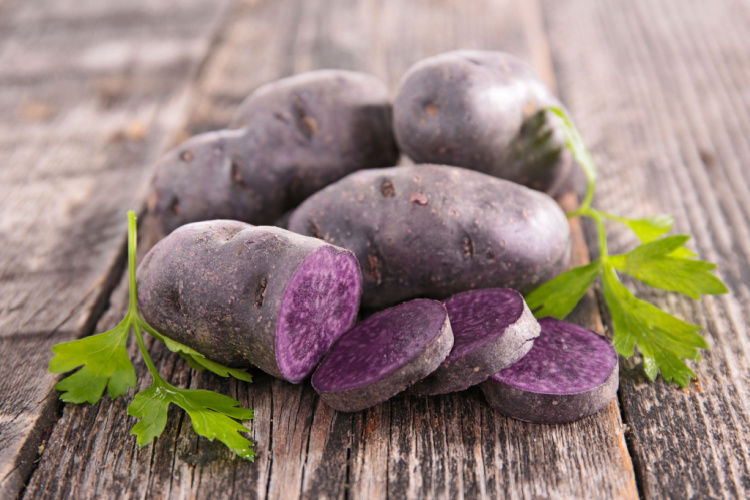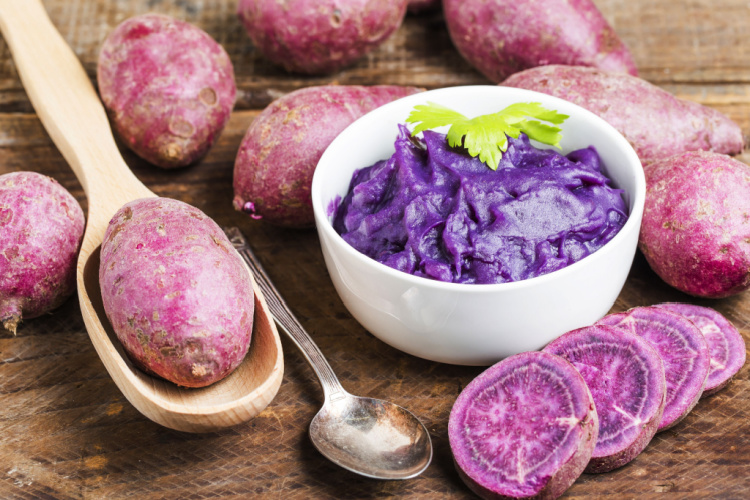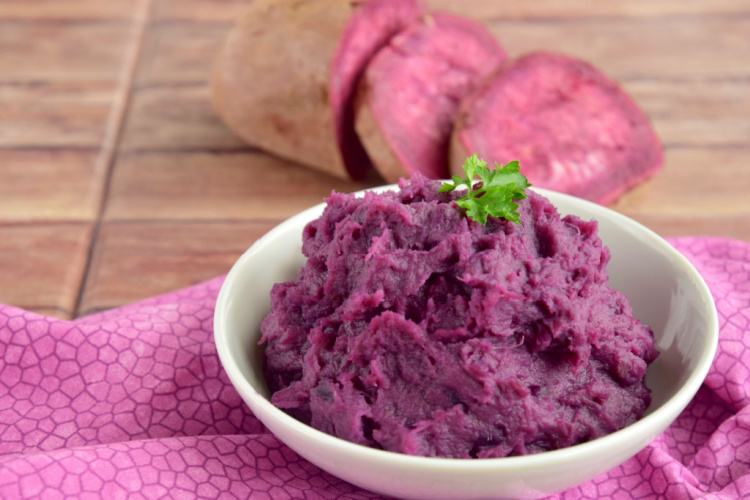Why You Should Eat Purple Potatoes
Potatoes of all kinds are a staple food in this world. They are easily grown, readily available, and affordable. However, none are prettier than the purple potato. Purple potatoes have been grown and consumed by humans as far back as the early 1800s. They are a delicious source of nutrients and can make a great addition to any balanced diet.

Purple Potato Benefits
Purple potatoes are root vegetables in the nightshade family–like tomatoes, eggplant, peppers, and other potatoes. Their purple shade comes from a pigment called anthocyanin that occurs naturally in the plant.
Full of Fiber
Like all potatoes, purple potatoes are very high in fiber. They have about a gram in every ½ cup serving. Fiber is great for keeping your digestive system running smoothly. The fiber in these potatoes is insoluble fiber. This is a “time-release” fiber that endurance athletes seek out.
In addition to time-released energy, and smooth digestion, fiber can also help with many other maladies like diverticulitis, GERD, high blood pressure, and hemorrhoids.
Provides Antioxidants & Phytonutrients
Anthocyanin, the pigment that gives these potatoes their color, is also a powerful antioxidant. And it’s one of many found in these potatoes. Anthocyanin has been part of folk medicine for years as a remedy for eye disease, high blood pressure, and liver dysfunction.
Food Coloring Made Natural
That purple color does more than just provide health benefits. It can also be used as a natural food coloring. If you are looking to color your frosting, Easter egg dye, ice cream, or really anything, look no further for your purple.
Anthocyanin is a great dye because it doesn’t have a strong flavor so doesn’t interfere with what you are coloring and it is also very stable. The color doesn’t break down easily and remains vibrant. It makes it easy to steer away from the artificial dyes that have been linked to so many adverse side effects.
Blood Pressure Support & Blood Clot Prevention
Potatoes may be able to help regulate or lower blood pressure. That’s because they contain chlorogenic acid and potassium. In some studies, these have both been linked to lower blood pressure.
Chlorogenic acid may also break down blood clots and inhibit proteins and peptides from coagulating. This is great because blood clots are a leading cause of death all over the world.

Some Things To Be Aware Of
Purple potatoes, like all potatoes, are high in carbohydrates and calories. And, though the purple variety has lower amounts of both compared to regular potatoes, they are still relatively high on the glycemic index. This means they can impact blood sugar levels. For those with diabetes, it could be a concern. If you are on a keto or low-carb diet, it’s also something to keep in mind. As with every diet, moderation and well-balanced eating habits are always recommended.

How To Use Purple Potatoes
Enough about the science, let’s discuss how to eat these lovely potatoes. At first glance, because of their color, you may think you can cook and eat them like a sweet potato. In reality, however, they are not as flavorful as sweet potatoes. Their flavor profile is more in line with regular potatoes.
Purple potatoes can be baked, boiled, fried, roasted, or mashed and seasoned to your liking just like russets and fingerling potatoes. Baking and boiling will always preserve the most nutrients, frying the least.

A Food For The Ages
Purple potatoes have stood the test of time. They have provided delicious, healthy additions to the diets of humans for years and will hopefully continue to do so for many years to come.
